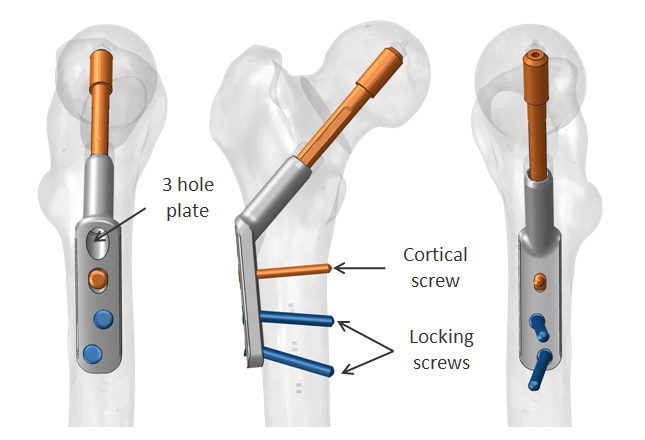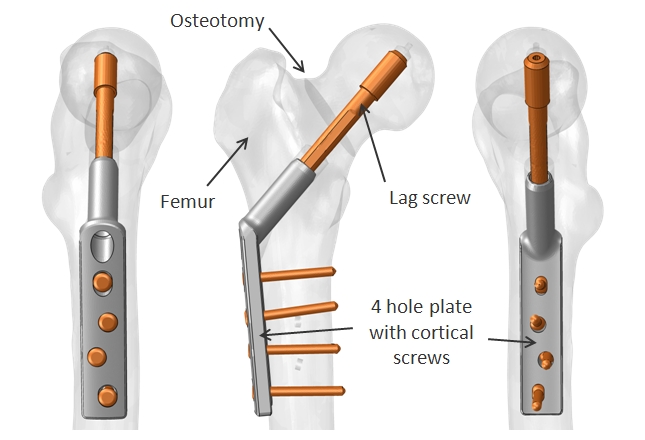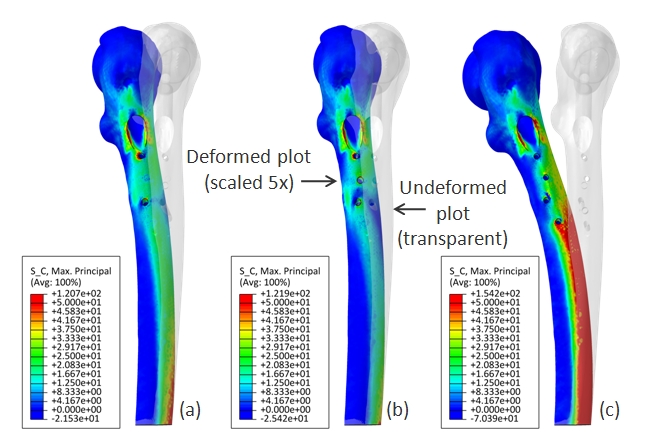
Projects
Various projects from the archive
Analysis of the AustoFix Surgical Tectona 3-hole sliding hip screw
Introduction: The sliding hip screw (SHS) is the implant of choice for the operative treatment of stable peri-trochanteric femur fractures. The current ?gold standard? uses a 4-hole side plate with four bi-cortical screws perpendicular to the plate and allows full weight bearing immediately after operation.
There are several advantages of using a shorter plate over a 4-hole plate including (i) a smaller surgical incision, (ii) a shorter surgical time, (iii) decreased operative blood loss and (iv) minimal periosteal stripping. However, several studies have suggested that stresses in the bone implanted with a SHS with a shorter plate may be 3-4 time greater than in a 4-hole SHS, increasing the risk of femoral fracture.
Methods: To investigate this, a finite element study was carried out to compare the performance of a SHS with a 3-hole plate, the Tectona (AustoFix Surgical), to one with a 4-hole plate. Two cases of the 3-hole SHS were examined; (a) 3 screws and (b) 2 screws (with middle screw removed). Models of the post-operative femur were generated and analysed using ABAQUS/Standard. The bi-cortical screws were pre-tensioned to 150N and several load cases were examined, including peak walking and peak stair loading.
Results: The resulting forces in the screws indicated that the two most proximal screws of the 4-hole plate were relatively ineffective, with the two distal screws heavily loaded. Consequently, the tensile stresses in the bone were lowest for the 3-hole plate with 3 screws and highest for the 4-hole plate. In summary, the results indicated a lower risk of femoral fracture for the 3-hole Tectona SHS compared to the standard 4-hole SHS.





